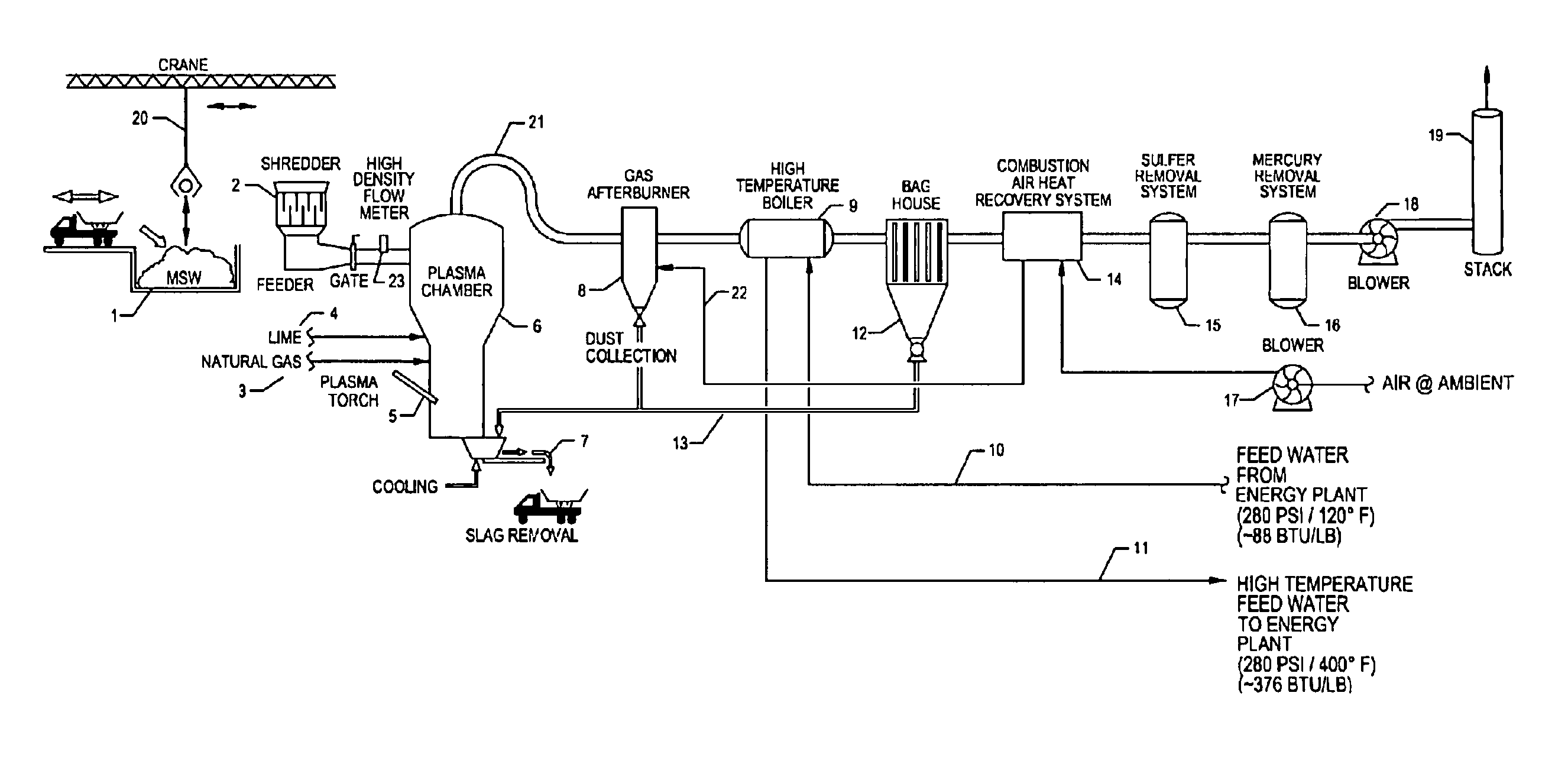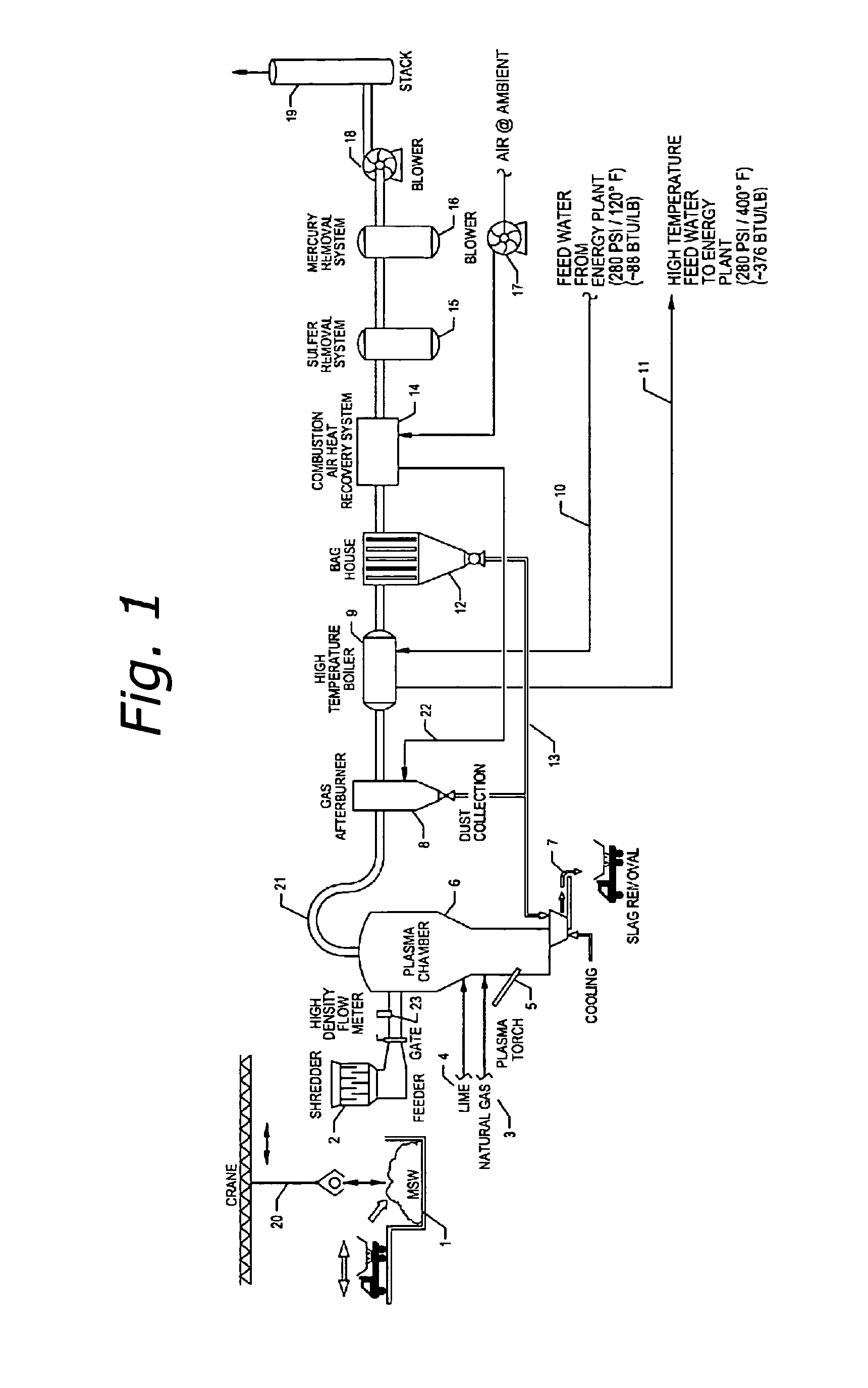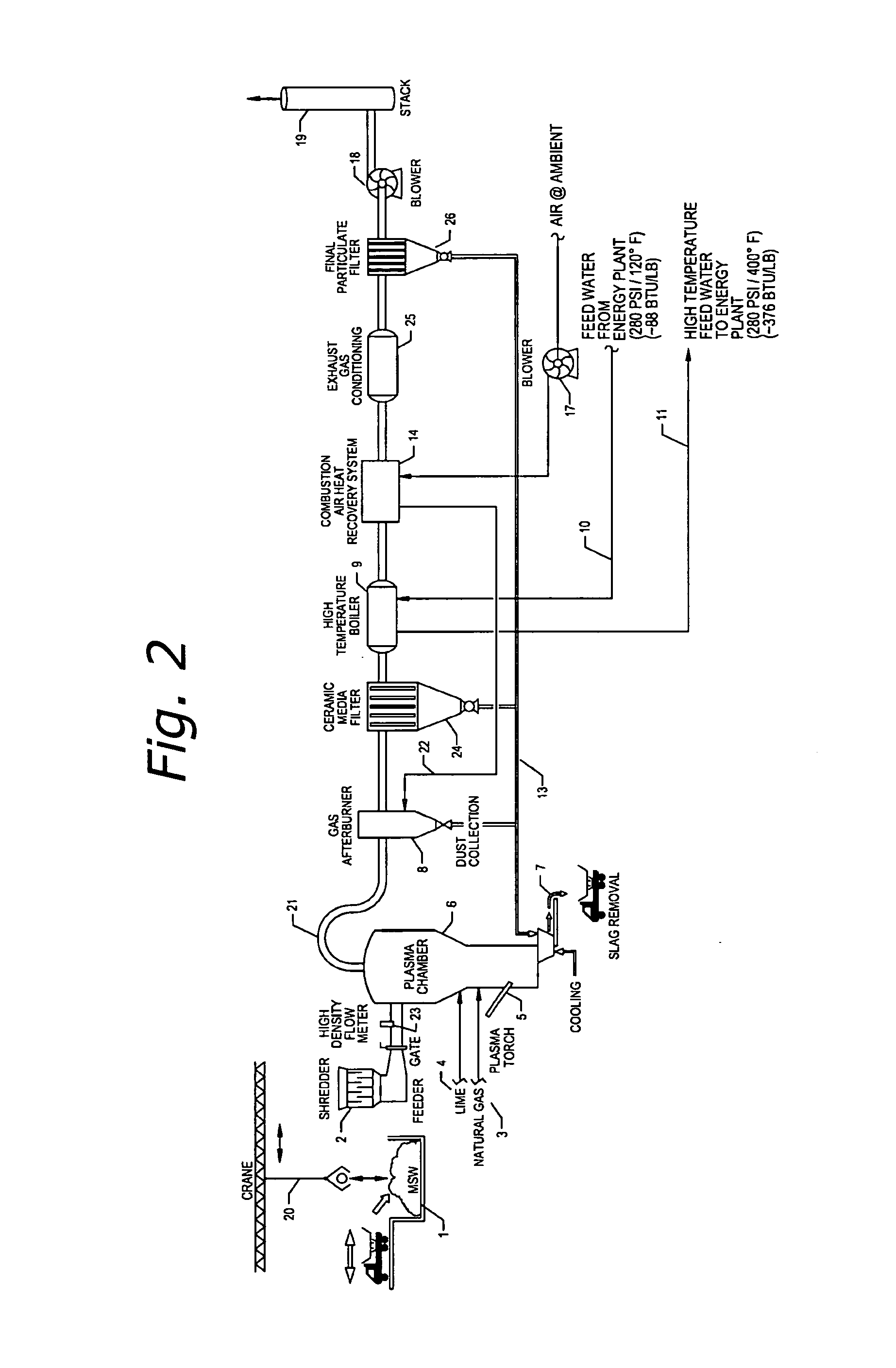Plasma Feedwater and/or Make Up Water Energy Transfer System
a technology of energy transfer system and feedwater, which is applied in the direction of combustible gas production, lighting and heating apparatus, combustion types, etc., can solve the problems of poor economics associated with plasma technology, existing plasma projects, and low cost of plasma technology, so as to reduce emissions in the afterburner.
- Summary
- Abstract
- Description
- Claims
- Application Information
AI Technical Summary
Benefits of technology
Problems solved by technology
Method used
Image
Examples
Embodiment Construction
[0044]FIG. 1 is a simplified schematic representation of a process and system for generating energy from a renewable energy source constructed in accordance with the principles of the invention. As shown in this figure, municipal solid waste, designated as MSW 1, or other feedstock, is delivered, in this specific illustrative embodiment of the invention, the system by a crane 20, which unloads same from a truck (not specifically designated). The feedstock can be any organic material, or fossil fuel. Crane 20 transfers MSW 1 a shredder 2. The shredded feedstock (not shown) is then delivered a plasma chamber 6. It is be understood that any other form of gassifier can be employed in the practice of the invention.
[0045]The feed system, which includes shredder 2, compresses the incoming feedstock MSW 1 so as minimize the introduction of air. An in-line, high density flow meter 23 monitors feedstock velocity provide instantaneous feedstock flow rate data. Plasma chamber 6, or other conven...
PUM
 Login to View More
Login to View More Abstract
Description
Claims
Application Information
 Login to View More
Login to View More - R&D
- Intellectual Property
- Life Sciences
- Materials
- Tech Scout
- Unparalleled Data Quality
- Higher Quality Content
- 60% Fewer Hallucinations
Browse by: Latest US Patents, China's latest patents, Technical Efficacy Thesaurus, Application Domain, Technology Topic, Popular Technical Reports.
© 2025 PatSnap. All rights reserved.Legal|Privacy policy|Modern Slavery Act Transparency Statement|Sitemap|About US| Contact US: help@patsnap.com



